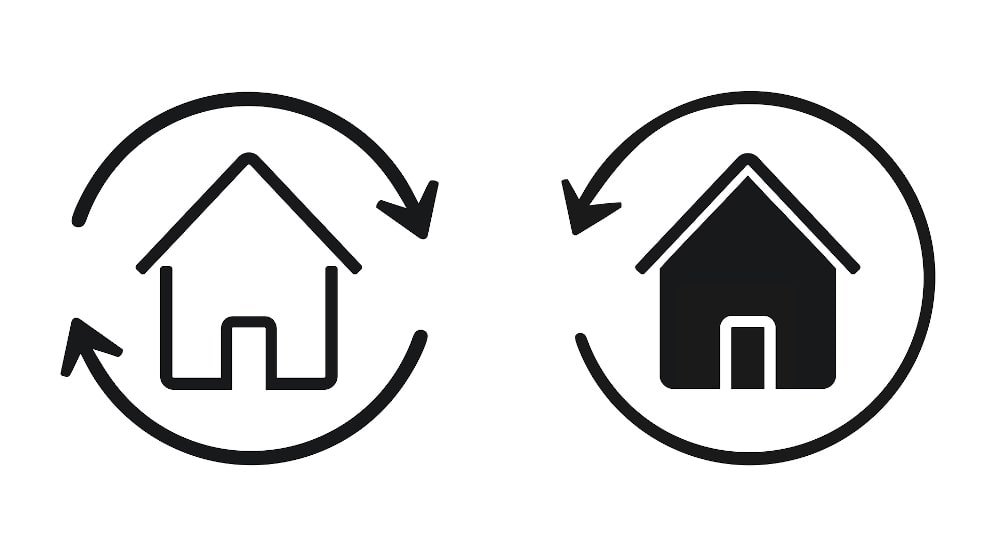Reverse Mortgage vs HELOC

A home remains one of the largest and most significant purchases most Canadians will make in their lifetime. Years of saving money and generating income are required to built out a significant amount of equity in your home. Sometimes, however, unforeseen events can put even the most financially-responsible homeowners in a crisis situation. In such moments, reverse mortgages and home equity lines of credit (HELOCs) can allow homeowners to access the funds they desperately need. In this guide, we will explore the differences between HELOCs and reverse mortgages, arming you with the information you need to pick the option best-aligned with your financial goals.
Understanding Your Options
Once you’ve decided to move forward with an equity-accessing tool, you must decide whether to use a HELOC or reverse mortgage. Before getting into the specifics of each financial instrument, it is important to first understand what they have in common. Your home equity represents the percentage of your home you have paid off, and therefore own. You can calculate your home equity by subtracting the amount of your loan principal that you have yet to pay from the total price of your home. Both a HELOC and reverse mortgage fundamentally help you get back some of the equity you’ve already paid, in exchange for a loan.
A reverse mortgage is only available to you if you are 55 or older (in Canada, or 62 and older in the US). You can only take out a reverse mortgage on your primary residence; investment or vacation properties are often ineligible. As part of a reverse mortgage, you receive a loan that can come as a lump sum, or in the form of regular payments. Unlike a traditional mortgage, you are not required to repay this loan until you move out, pass on, or sell your home. When you repay the principal loan, the total interest must also be paid out. After opting for a reverse mortgage, you will no longer need to make monthly mortgage payments, only one lump sum payment at the end of this new loan.
On the other hand, a home equity line of credit ( HELOC ) is a revolving line of credit that allows you to borrow money against the equity you’ve already built up in your home. In a sense, the HELOC works much like a credit card. There is a maximum borrowing limit, and you are able to withdraw as many funds as needed within a specified period. You only accrue interest on the amount you actually withdraw and use. Just like with a credit card, you can pay off your outstanding balance periodically before drawing again. Since HELOCs often have lower interest rates than credit cards, some Canadians opt to take out a HELOC to pay off their outstanding credit card debt.
Reverse Mortgage vs HELOC: What’s the Difference?
- Qualifications: In order to qualify for a reverse mortgage, you need to be over the age of 55, apply on behalf of your primary residence, and have a significant amount of equity in that home. HELOCs, on the other hand, do not have any specific age requirements, but do require a strong credit score and enough pre-existing equity in the property.
- Payment Structure: If you have a reverse mortgage, you may receive those funds as a lump sum, or you can choose to have it paid out to you in regular intervals. As long as you continue to reside in the home, you do not need to make any monthly payments or repay the loan until you move out of the house, pass away, or sell it. With a HELOC, you typically pay it off like a credit card, and can use it as a credit card as well. Spending and paying off your line of credit does not follow a strict schedule, and there is a lot of flexibility available, but there are repayment deadlines for each withdrawal, similar to a classic credit card.
- Interest Rates: Interest rates for reverse mortgages can either be fixed or variable. These are often higher than those of traditional mortgages. On the other hand, HELOCs usually have variable interest rates, which can fluctuate over time. Since a home equity line of credit will typically have a lower interest rate than a credit card, HELOCs are sometimes used for debt consolidation.
- Loan Amounts: If you’re looking to take out a reverse mortgage, the maximum borrowing amount will be based on a number of factors: the age of the youngest borrower, the appraised value of the home, current interest rates, etc. On the other hand, HELOC loan limits are based around a percentage of their home’s equity, and can vary from lender to lender.
Choosing What’s Right for You
When deciding between a reverse mortgage and a HELOC, there is no single right answer. Your income, financial goals, and future plans will all impact the pros and cons of each alternative.
If you are over the age of 55, and you are looking to supplement your retirement income, or otherwise make use of additional funds, you may prefer a reverse mortgage. You may also prefer this option if you do not want to make monthly payments, and instead prefer to pay off the loan all at once. On the other hand, if you prefer more flexibility in borrowing and repayment , and you're comfortable making monthly payments, a HELOC might better suit your needs.
It's essential to thoroughly research and compare the terms, costs, and potential risks associated with each option before making a decision. Consulting with a Clover Mortgage broker can also provide valuable guidance tailored to your individual circumstances, helping you make a well-informed choice that aligns with your long-term financial objectives. Contact us today to schedule a free consultation.
FAQ
How is a Reverse Mortgage Different from a Line of Credit?
Reverse mortgages and HELOCs are both tools that can help you access the equity in your home, but there are of course a few notable differences. In order to be eligible for a reverse mortgage, you must be over the age 55, must be applying on behalf of your primary residence, and must have sufficient equity in your home. If approved, you will not have to make any monthly payments until you move out or sell the home, at which point you will need to pay the outstanding balance and interest as a lump sum to your lender.
A HELOC, on the other hand, will operate a lot more like a credit card. During the withdrawal period, you may withdraw and repay your balance at your discretion, within the parameters set out by your lender. Additionally, while reverse mortgages typically are tied to higher mortgage rates, HELOCs are tied to the overnight benchmark rate, and vary based on market fluctuations.
Why Should You Get a Reverse Mortgage?
- Bonus Income: Reverse mortgages are popular amongst retirees who are looking for a tax-free source of income that can help cover daily living expenses, healthcare costs, or discretionary spending.
- No Monthly Payments: Because reverse mortgages do not require monthly payments, they are an attractive option for many homeowners, who may wish to simply use the sale of their home to pay off the outstanding balance. This feature can be particularly beneficial for retirees with limited cash flow.
- Primary Residence: Since reverse mortgages are centered around your primary residence, they allow you to continue living in your home while accessing your equity. Typically, you would need to first sell your home to regain the equity you had previously invested. This aspect can be especially appealing for older adults who wish to age in place and maintain their independence and familiar surroundings.
How Much Equity is Needed for a Reverse Mortgage?
In Canada, the amount of equity needed for a reverse mortgage varies depending on several factors, including your age, the value of your property (as has been formally appraised), and the specific requirements of your lender. In order to qualify for a reverse mortgage, Canadians typically need to have a significant amount of equity built up already. While there is no legal requirement or threshold for equity, each lender is free to choose their own parameters, and may accept or reject your application based on their requirements. Age also pays a significant role as older Canadians often qualify for larger loans. Ultimately, it is best to discuss the parameters and requirements of this debt consolidation tool with a variety of lenders, or with a trusted financial advisor.





